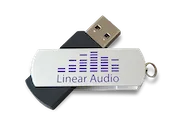
Measurement Means and Methods
Grounding, Shielding and Guarding. This is a chapter (Chapter 32) from Fluke book on calibration: Calibration: Philosophy in Practice. I own the book but recently had to leave it behind (I hate airline baggage rules) but extracted the relevant chapter. Goes much further than what we usually see in audio.
Cable screening for extremely low noise and hum. During a project aimed at measuring extremely low harmonic distortion, I got a nuisance interference from mains noise on the measurement. I traced it ultimately to the test leads, BNC-terminated coax. With the Audio Precision analyzer shorted with a shorting BNC, the 50Hz mains line on the spectrum analyzer was below -150dBV. However, with a regular BNC-terminated coax, shorted at the far end, this worsened by 20 to 40dB depending on cable type and length. For the same cable type it almost perfectly correlated with length. I am now on the hunt for the perfect cable, and a short paper from the British OFcom points in the direction of a cable with multiple screens, foil and braid. To be continued.
I'm mostly an electronics guy but now and then I venture into speaker design, like for my SpeakerCamp project (at about 3:13 minutes). In looking for test methods for speakers I came across a very interesting article by George Ntanavaras, who designed an accelero-meter based test set to measure mechanican vibrations from speakers and enclosures. I purchased the PCB from George and build up the unit, and it has been a very worthwhile addition to my lab. In fact, I had trouble getting it back from friends who loaned it 'just for s few days'!
The article has been published in AudioXpress and they have agreed to place the article online for those who missed it. Also, George let me know that he still has PCBs and front panels available to help you get going quickly and cleanly. Recommended for anyone who really wants to know about enclosure vibrations and the effects of bracing, material selection and stiffness etc.
Contribution by Demian Martin for all you ultra-low distortion oscillator designers: how they did it in the Krohn-Hite KH4024. A very large file!
Dr. Hirata et al Engineering Report for the AES from April 1981, on a distortion measurement method that gives insight into the TYPE of non-linearity rather than a single distortion number: Non-linear Distortion Measurement Using Composite Pulse Waveform.
A different, but related type of transient testing by Southworth, from 1966.
Contribution by John Curl related to the LT1166 bias chip. The measurements are here and here.
Notch filter Auto-tunes for audio applications - John R Ambrose (EDN July 2010)
HP 3577A application note for using the 3577 to do loop gain measurements of a feedback loop: HP PRODUCT NOTE 3577A-2
"Possible methods for the measurement of transient intermodulation distortion", Matti Otala and Eero Leinonen, Technical Research Center of Finland, 1976.